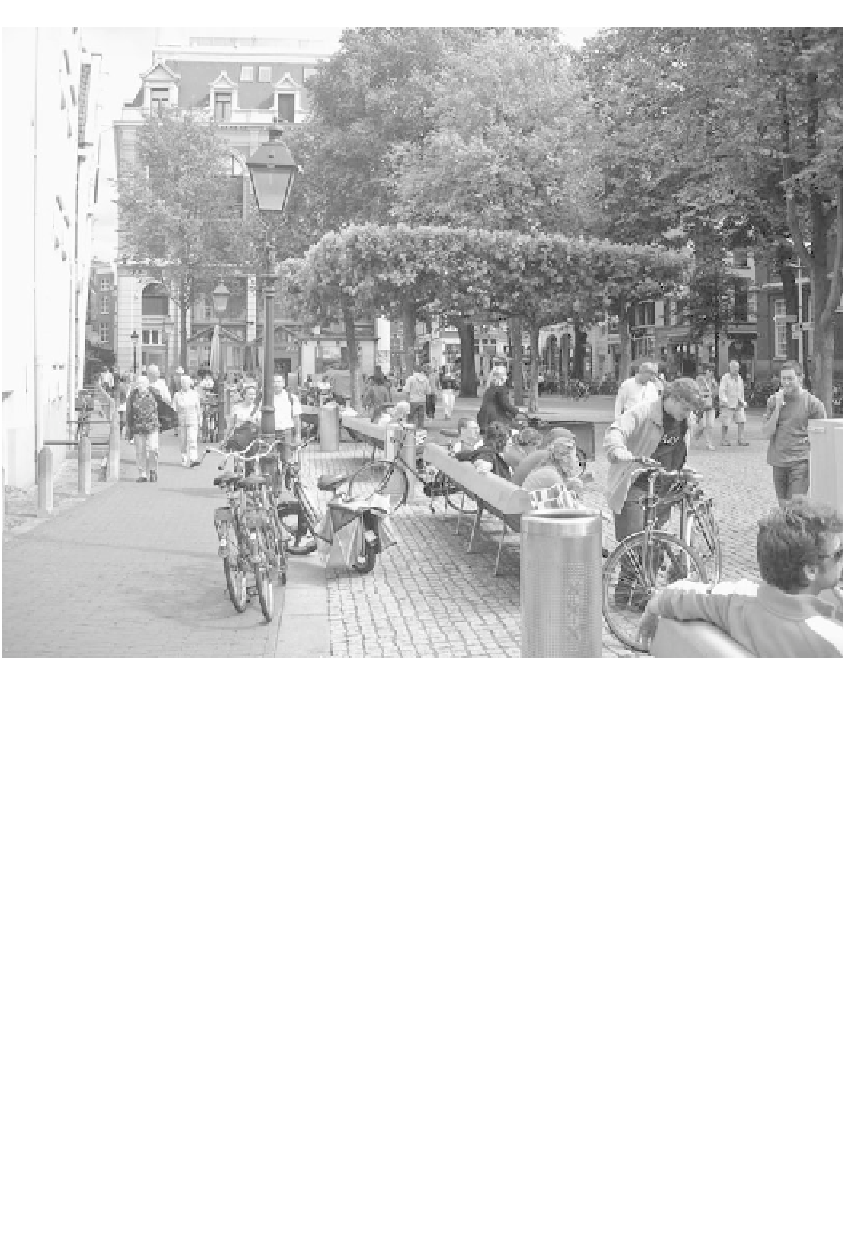Environmental Engineering Reference
In-Depth Information
Figure 1.26
Amsterdam, Netherlands. There are alternative models for travel in cities - and it is time to
replicate these internationally. People in the Netherlands don't cycle because they are poor and
can't afford a car, but because it is an attractive and healthy way to get to work and access other
facilities.
increase in travel take place (i.e. the ladder is drawn up). But the consequences of following
the same pathway need to be very carefully considered, not just in transport, but in terms of
how cities should develop in the future. There are considerable opportunities to 'leapfrog'
from low mobility and low carbon use, to high accessibility and low carbon use, without
passing through the very wasteful 'ICE motor car phase'.
The transport sector is hence at a major crossroads in terms of the direction it takes.
Achieving sustainable mobility around the world is proving to be extremely problematic. At
the moment there are very selective efforts to develop strategies to reduce GHG and CO2
emissions, with some limited consideration of potential policy pathways. The ambitions of
the policy are not being met in practice. Meanwhile transport CO2 emissions continue to rise.
Even in the cities that are taking the lead in moving towards transport emissions reductions,
progress is very slow. There are few examples of sustainable transport behaviours in suburban
areas. There are no examples in the industrialised countries where area-wide transport CO2
emissions have been reduced by 80 per cent or even 60 per cent on 1990 levels, despite the
targets and the postulation; and in the emerging countries there are few significant reductions
against BAU projections. International targets,if they are set, are often unambitious, and the
pathways followed do not reveal significant progress and substantial savings in the short term.

